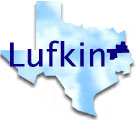

|

|

|

|

|

|

|

|

|

|
Municipal or County Traffic Operations Center Equipment Packages |
 |
The following equipment packages are associated with the "Municipal or County Traffic Operations Center" element. Select the "Details" icon to see the detailed requirements associated with each equipment package, or consult the National ITS Architecture web site for more information.
Management of traffic sensors and surveillance (CCTV) equipment, and distribution of the collected information to other centers and operators.
Remotely monitor and control highway-rail intersection (HRI) equipment, includes standard speed active warning systems and high speed systems which provide additional information on approaching trains and detect and report on obstructions in the HRI.
Coordination between rail operations and traffic management centers - exchanging train schedules, maintenance schedules, as well as incidents and priority messages which result in highway-rail intersection (HRI). Supports advanced traffic control strategies and enhanced traveler information.
Management of environmental sensors and assimilation of collected data with other current and forecast road conditions and surface weather information from weather service providers and roadway maintenance operations.
Development, coordination, and execution of special traffic management strategies during evacuation and subsequent reentry of a population in the vicinity of a disaster or major emergency. Interfaces with emergency management and other traffic management centers.
Remotely controls ramp meters, mainline metering, and lane controls on freeways based on upstream and downstream traffic flow and ramp queue length algorithms.
Remotely controls traffic and video sensors to support incident detection and verification; exchange information with other agencies including emergency management, maintenance and construction, alerting and advisory systems, event promoters, intermodal freight depots, and traveler information systems.
TMC Incident Dispatch Coordination/Communication
![]()
Center-based capability to formulate an incident response that takes into account the incident potential, incident impacts, and/or resources required for incident management including proposing and facilitating the dispatch of emergency response and service vehicles as well as coordinating response with all appropriate cooperating agencies.
TMC Probe Information Collection
![]()
Collects, assimilates, and disseminates vehicle probe data collected from roadside beacons and centers controlling transit vehicles, emergency vehicles, toll collection points, and route-guided vehicles.
Coordination between traffic management centers in order to share traffic information between centers as well as control of traffic management field equipment. This may be used during incidents and special events and during day-to-day operations.
Remotely controls traffic signal controllers to implement traffic management strategies at major intersections and on main highways for urban areas, based on traffic conditions, incidents, emergency vehicle preemptions, pedestrian crossings, etc.
TMC Traffic Information Dissemination
![]()
Controls dissemination of traffic-related data to other centers, the media, and travelers via the driver information systems (DMS, HAR) that it operates.
TMC Work Zone Traffic Management
![]()
Coordination with maintenance systems using work zone images and traveler information systems (such as DMS), and distribution of work plans so that work zones are established that have minimum traffic impact.
Monitoring and remote diagnostics of field equipment - detect failures, issue problem reports, and track the repair or replacement of the failed equipment.
 Web Spinner Technology.
Web Spinner Technology.